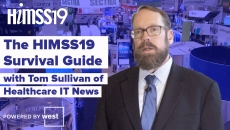Innovation Pulse
Health secretary hails Northern Powerhouse for its "big part" in UK’s success.
Since 2013, Bayer Digital Health has been supporting initiatives in the healthcare market, and, starting this month, there will be new financing options.
Examples from Scotland, Finland, Sweden and Brazil were showcased at a recent event in Helsinki.
Having a bimodal approach to ICT operation – one that marries a predictable evolution of products and technologies with the new and innovative – has become a necessity in healthcare.
Infosec is a patient safety issue and it’s critical that customers trust you. But many health systems have been investing too little for years. It’s time for that to change.
Yesterday at the World Medical Innovation Forum in Boston, Centers for Medicare and Medicaid Services Administrator Seema Verma argued that government can often foil innovation.
Here’s what I found at this year’s security conference.
Info-blocking ruled the day, while APIs, FHIR, artificial intelligence and virtual reality were also prominent themes at this year’s Global Conference.
Veteran HIMSS conference-goer and Healthcare IT News Editor-in-Chief Tom Sullivan offers tips on preparing for the massive event, what to look for and the best ways to keep pace with breaking news.
Innovation
APIs are a great start, but so much more goes into building an app and winning customers.
